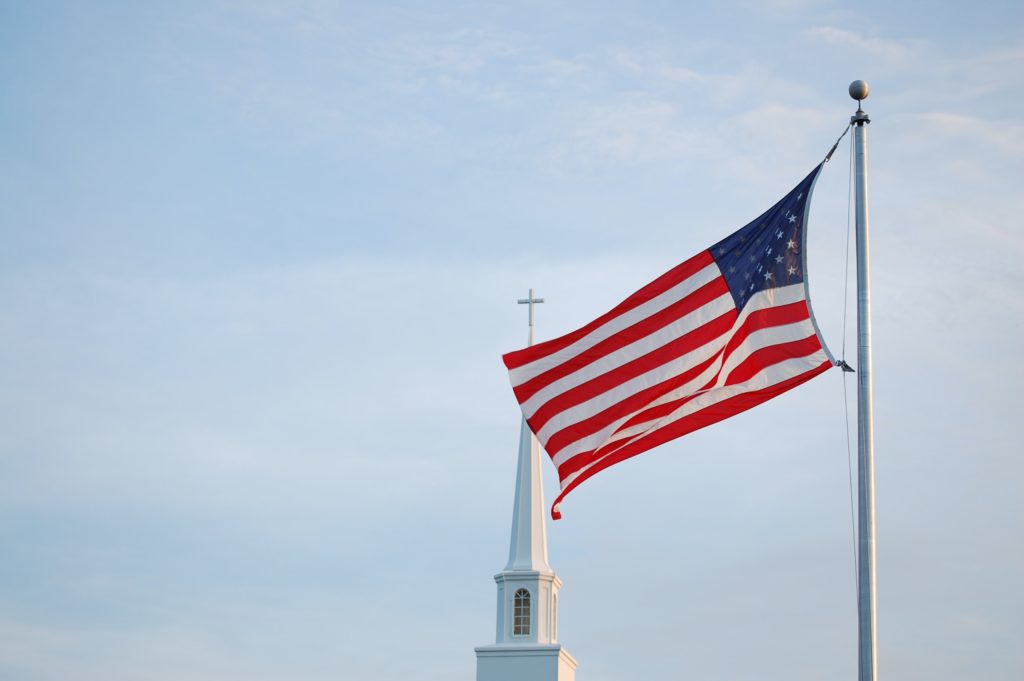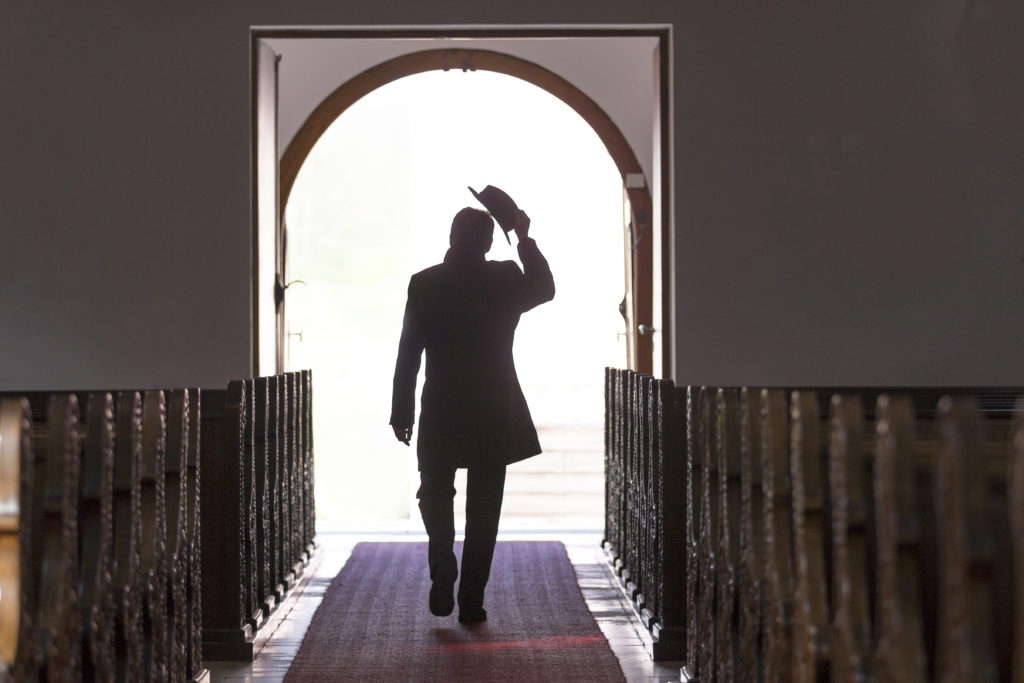I’m privileged to serve with Redeemer City to City, a ministry that helps national leaders plant churches and reach their countries’ greatest global cities. That means many of the leaders I work with are non-western Christians. And the one question that I’ve heard over the past three years from these brothers and sisters is: “Have U.S. evangelicals lost their minds?”
If you are distressed about the condition of the church in America, consider how we must look to our brothers and sisters in Christ abroad!
No one thinks the current state of our American churches is a good one. In this series of articles, I want to first look at the factors that have led to decline; in the last two articles, I will lay out some ideas for renewal and a way forward.
Faith in Decline
In the fall quarterly article, I described how the largest and most culturally dominant religious bodies in the U.S. for centuries—those of mainline Protestantism—went into a sharp decline in the late 1960s and early 1970s. A generation ago, mainline Protestantism was the largest religious category and the most culturally dominant, followed by Roman Catholicism and then evangelicalism.

But in the last quarter of the 20th century, mainline Protestantism essentially switched places with evangelicalism. After distancing itself from fundamentalism in the 1940s and 1950s, evangelicalism grew. The liberal theology and politics of the mainline alienated the more conservative U.S. population, which was still more traditional. Millions left the mainline and gravitated toward evangelical churches. By the first decade of the 21st century, about 30% of Americans identified as “born again” evangelicals. [] [1] While the “Nones” (no religion or no religious preference) rose from 16% to 29% from 2007 to 2021, the number of evangelical Protestants declined from 30% to 24%, of Catholics from 24% to 21%, and of mainline Protestants from 22% to 16% during the same period. See Gregory A. Smith, “About Three-in-Ten U.S. Adult Are Now Religiously Unaffiliated” Dec 14, 2021, Pew Research Center, https://www.pewforum.org/2021/12/14/about-three-in-ten-u-s-adults-are-now-religiously-unaffiliated/. See also Ryan Burge, The Nones: Where They Came Rrom, Who They Are, Where They Are Going, Fortress, 2021. Burge uses the General Social Survey that has been in use since 1972.
Since 2007, however, evangelicalism has begun its own decline. All indications are that in the coming years an unprecedented number of younger Americans will be leaving churches and institutional religion of all kinds behind. But why?
WHY IS FAITH IN GENERAL IN DECLINE?
The background – the secularization of the elites.
A process called “secularization” has been going on in western societies for several centuries, mainly among highly educated elites, though it gathered steam among the general population after World War II in Europe and after the 1960s in North America. The bloody European wars of religion in the 16th, 17th, and 18th centuries led many to search for a basis of a society that did not require a common church or set of religious beliefs.
[]
[2] For the most comprehensive account of secularization, see Charles Taylor, A Secular Age, Harvard, 2007.
The “Enlightenment Project” was an attempt to explain the human situation and arrive at moral values using only neutral, objective human logic and science, not religion. Secularization has two basic features.
The enforced privatization of religion. Science and technology are considered the only ways to understand and solve human problems. Beliefs and values based in religion are never to be invoked in serious public discourse (except in the most general “In God We Trust” references). This has made religion seem irrelevant to society.
A radical individualism. The move from religion to the use of one’s reason was accompanied by a move from communities to individuals as the main building block of society. The West developed a view of the emancipated self that must be free to determine its own moral choices. This automatically makes religious norms look like a threat to selfhood.
The foreground – the secularization of the masses.
The therapeutic view of the self
[]
[3] As Philip Rieff wrote in The Triumph of the Therapeutic, earlier cultures always sought to adjust the self to the norms and expectations of society. But the therapeutic view is that society must accept and adopt the norms individuals set for themselves.
which now guides our culture creates a transactional, cost-benefit individualism that applies the concepts of the marketplace to all relationships. Yuval Levin says increasing social distrust not only undermines religion, but all institutions, political leaders, the military, colleges and universities, and the family itself.
[]
[4] Yuval Levin, A Time to Build: From Family and Community to Congress and the Campus, How Recommitting to our Institutions Can Revive the American Dream, Basic Books, 2020.
This in turn has accelerated the erosion of religion through
[]
[5] The following list relies on Ross Douthat, Bad Religion: How We Became a Nation of Heretics, Free Press, 2013, as well as some of his more recent on-line lecture
:

The political polarization of culture and church. People look for religion substitutes such as politics. The two U.S. political parties have changed into almost uniform Left-wing and Right-wing groupings. The mainline church aligned tightly with the Left and evangelicals with the Right, weakening the church’s credibility in the broader culture. Harvard political scientist Robert Putnam explains and argues this well. [] [6] In American Grace: How Religion Divides and Unites Us (Simon and Schuster, 2010).
The sexual revolution comes from the belief that sexual expression is central to an authentic identity. This meant that the Christian sex ethic became successfully branded as unreasonable (an ideal no one can live up to), as well as psychologically unhealthy and oppressive.
The growth in higher education and social media. In 1940, only 4% of the population had a bachelor’s degree; today, it is over 33%. Secularization originated in the intellectual classes, and the academy now exercises greater influence in society. [] [7] See Christopher Lasch, The Revolt of the Elites and the Betrayal of Democracy, revised ed. W.W. Norton, 1996.
THE FAILURE OF THE ENLIGHTENMENT PROJECT
The result of the individualism of the Enlightenment has been the decline of all human communities—institutions, neighborhoods, and families—leading to greater isolation, loneliness, anomie, anxiety, and depression. This did not happen all at once. The “cultural capital” of Christianity continued to provide unity in western culture for centuries, since the vast majority of the population went to church even if the “elites” were largely secular. Even today the main values of western secularism are those derived from Christianity. [] [8] See Tom Holland, Dominion: How the Christian Revolution Remade the World, Basic Books, 2019.
But as the percentage of the population going to church declined, and as the radical individualism of the West became more pervasive, the original Enlightenment vision of a society based on secular human reason alone came largely to pass. But it has not led to unity at all. Western society in general and U.S. society in particular are polarized, fragmented, and ungovernable as everyone adopts their own meaning in life and moral values.
Evangelicalism in Decline
In the past few years, an enormous amount of attention has been given to the influence of evangelicalism. One reason for this is that it remains the single largest category of religious Americans. Another reason is that 80% or more of white, self-identified evangelicals supported Donald Trump in 2016 and a new right-wing populism and nationalism. Arguably, they were the main reason for his ascendency.
Despite some conflicting data readings, most agree that evangelicalism is declining in the U.S. [] [9] Ryan Burge points out there are more people now willing to identify themselves to pollsters as “evangelical” who don’t go to church. All this indicates that people are increasingly choosing their religion on the basis of their politics. If that is true, that could inflate the number of evangelicals and give the false impression that the movement is more resilient and spiritually healthy than it really is. See Ryan Burge, “Think US Evangelicals are dying out? Well, define evangelicalism …” The Conversation, Jan 21, 2021, https://theconversation.com/think-us-evangelicals-are-dying-out-well-define-evangelicalism-152640 Meanwhile, within evangelicalism there are a number of factions seemingly battling to the death over control of the movement, even as academics and social scientists argue about the actual definition of an evangelical.
All this creates confusion. What is evangelicalism? What crises does it actually face? And are there any reasons for hope for it?
WHAT IS EVANGELICALISM?
Answering this question is not as easy as it might seem.

The Theology of Evangelicalism
On the one hand, a person or group can be classified as evangelical if they meet the theological criteria listed by David Bebbington (now called the Bebbington Four or Quadrilateral).
[]
[10] D.W. Bebbington, Evangelicalism in Modern Britain: A History from the 1730s to the 1980s, Routledge, 1989.
The four marks of evangelicalism are a belief in (1) the full authority of the Bible as the sole and supreme rule of faith and practice, (2) the necessity of the new birth by the Holy Spirit, (3) reconciliation with God through the atoning work of Christ, not our good works, (4) the responsibility to share the gospel in word and deed. These distinguish evangelicals from mainline Protestants, Catholic, and Orthodox Christians. Beneath these four marks, however, evangelicals share with all other Christians a belief in the Trinity, the deity of Christ, and other basics of the Apostles and Nicene Creed.
The Sociology of Evangelicalism
However, in addition to having these doctrinal or theological convictions, all denominations have a sociological “location” as well, which means they are the product of certain historical events. The Awakenings of the 18th and early 19th centuries, the Civil War and the controversy over slavery, the ejection of evangelicals from the mainline denominations, the Civil Rights movement of the mid-20th century, and the rise of the Christian Right in the late 20th century all have produced among many U.S. Christians a number of social characteristics—cultural attitudes and practices—that are not shared by evangelicals in other countries who, while holding the identical evangelical theology, live in different social contexts.
[]
[11] Sources on each of these eras: Harry S. Stout, “What Made the Great Awakening Great?” in H.Carter and L.Porter. eds, Turning Points in the History of American Evangelicalism, Eerdmans, 2017; Nathan O. Hatch, The Democratization of American Christianity, Yale, 1989; Mark A. Noll, The Civil War as a Theological Crisis, University of North Carolina, 2006; Mark A. Noll, God and Race in American Politics, Princeton, 2008; Luke E. Harlow, “The Civil War and the Making of Conservative American Evangelicalism” in H.Carter and L.Porter. eds, Turning Points in the History of American Evangelicalism, Eerdmans, 2017; George Marsden, “The Rise of Fundamentalism” in H.Carter and L.Porter. eds Turning Points in the History of American Evangelicalism, Eerdmans, 2017; Lydia Bean, The Politics of Evangelical Identity: Local Churches and Partisan Divides in the United States and Canada, Princeton University Press, 2014.
Recognizing these “two addresses” of evangelicalism (theological and sociological) helps us discern something important. Within the framework of the four theological marks, what I’ll call the six social marks of evangelicalism can be stronger or weaker (see below). The term “fundamentalism” was one way used in the past to describe those who hold these social traits very strongly. The six social marks are:
- Moralism vs gracious engagement — Strict conformity to behavioral codes. Secondary doctrines made primary with resulting self-righteousness. Everything is either wholly good or evil, leading to withdrawal from society. A spirit of condemnation. Separatism and sectarianism. No ability to engage opposing views with patience, humility, hope, and tolerance.
- Individualism vs social reform — Belief that we are wholly the result of our personal choices. Little understanding of how culture forms us, or of systemic or institutional evil forces.
- Dualism vs a vision for all of life — A pitting of biblical beliefs against culture. Either we seek a hostile takeover or we seal off Christian beliefs from our work and life in society. No thought for how faith shapes the way we work in the secular spheres and how it can serve society.
- Anti-intellectualism vs scholarship — A distrust of experts, a reverse snobbism against education, and of any result of scholarship or research which is not believed as “common sense” to most people. Distrust of scholarship. Skepticism of science. A refusal to show other viewpoints any respect. A shallow “common sense” approach to biblical interpretation that ignores the biblical author’s intended meaning in the original context and the scholarship that helps us discern it.
- Anti-institutionalism vs accountability — A distrust of traditional institutions. A use of celebrity-driven, brand-driven platforms and networks which lead to fast growth, but low accountability. A tendency to authoritarianism.
- Enculturation vs cultural reflection — A wedding of Christianity to popular, traditional U.S. culture. Two features: (a) Gender exaggeration- due to fundamentalism’s tendency to “baptize” American culture, there is a legalistic tendency toward non-biblical gender stereotypes (especially those of the 1950s), a denigration of women, and cover-up of abuse. (b) Nationalism– A “God and Country” ethos that rejects reflection on the dark sides of U.S. history and society and expresses fear of a multi-ethnic future. (c) Racism- Often overt, but at the very least a racial and cultural insensitivity and cluelessness.
EVANGELICALISM AND FUNDAMENTALISM
Historically, there has been a distinction between fundamentalism and evangelicalism. George Marsden has written important volumes on this history. During the 1930s-50s, a “neo-evangelical movement” (led by Carl Henry, Billy Graham) sought to bring serious Bible scholarship, deeper intellectual thinking, and social responsibility back to northern white evangelicals. [] [12] See Carl F.H. Henry, The Uneasy Conscience of Modern Fundamentalism, Eerdmans, 1947. Many historians have pointed out that despite Henry’s call for a critique of both capitalism and socialism in his volume, the early proponents of “neo-evangelicalism” were still largely skeptical of the Civil Rights movement and reticent about criticizing American society. They sought to establish a movement that was true to historic, orthodox Protestant beliefs, but that shed the anti-intellectualism, the marriage to American culture, the sectarianism, the legalism and emphasis on secondary and tertiary doctrines, and the pietism and individualism that rejected the need for social reform or cultural engagement. This evangelicalism flourished for about a generation, from the mid-1940s to the mid-1970s. After that, fundamentalism began to make a comeback, particularly with the rise of the Moral Majority, established in 1979. [] [13] Many critics of evangelicalism argue that the founders of neo-evangelicalism (Henry, Ockenga, Graham) during their leadership sowed the seeds of the resurgence of fundamentalism that came in the 80s and 90s.
Fundamentalism is not identical with all conservative Protestantism. There are many churches and believers who are solidly orthodox in the theological marks, even in somewhat more conservative versions of the marks (e.g. penal substitutionary atonement; forensic justification by faith), and yet who largely lack the social marks of moralism, anti-intellectualism, individualism, and so on. Distinctions need to be made here that are not being made in the media or public consciousness. There are many churches that deliberately work to escape the gravitational pull of the history and social traits we have outlined. Some of these are historically confessional churches such as Lutheran, Anglican, Presbyterian and others. Some are led by evangelical leaders simply opposed to the obscurantism, harsh rhetoric, individualism, legalism, and separatism of fundamentalism.
The emphasis on the “Bebbington Four” theological marks and a reluctance to use the pejorative word “fundamentalist” has led to a loss of distinction between conservative Protestants who are not fundamentalist and those who are. Stressing the “Bebbington Four” as the exclusive way to define evangelicalism or conservative Protestantism tends to flatten and hide significant differences. Kristin Kobes Du Mez rightly argues that American evangelicals prefer to define themselves by their doctrine, ignoring the sociological marks and history. When they do so, evangelicalism looks very large—it “manifests as a racially diverse and global movement.” [] [14] Kristen Kobes Du Mez, Jesus and John Wayne: How White Evangelicals Corrupted a Faith and Fractured a Nation, W.W.Norton, 2021, 5.
But, Du Mez adds, while white American evangelicals do share their theological marks with other groups, their sociology affects the way these theological marks are emphasized and expressed. Will the Bible’s military metaphors be stressed to the exclusion of those that call for sacrificial service? Are all the turning points of redemptive history—creation, fall, redemption, restoration—equally grasped and taught? [] [15] Kristen Kobes Du Mez, Jesus and John Wayne: How White Evangelicals Corrupted a Faith and Fractured a Nation, W.W.Norton, 2021, 5-7. See also the “Roundtable” discussion on the Bebbington definition in M. Noll, D.W.Bebbington, G.M.Marsden, Evangelicals: Who They Have Been. Are Now. And Could Be, Eerdmans, 2019, 123-187. So an exclusive use of theological markers for definition and discernment can mask many important differences within conservative Protestantism.
But the word “Fundamentalism” can also be used to mask differences. It is typical in dictionary definitions to define religious fundamentalists as those who interpret the Scriptures “literally.” J.I. Packer has deftly shown how this definition subtly eliminates the historic evangelical approach to Scripture. [] [16] A good overview of fundamentalism and its distinction from historic evangelicalism is treated in the first two chapters of Packer, Fundamentalism and the Word of God, IVP, 1958. Though Packer’s references to critics of evangelicalism (and proponents) are now dated, the arguments are solid and necessary to grasp today. See especially pages 102ff. It is true that there is a fundamentalist mindset that interprets even apocalyptic prophetic literature in literal ways, and which ignores efforts to discern historic and cultural context.
But to say “we don’t take the Bible literally” allows the speaker to take biblical teaching about the resurrection of Jesus, for example, as merely symbolic, even when it’s clear that the gospel writers intended to teach us that Jesus literally and physically rose from the dead. Packer shows that evangelicals seek the natural sense of a text—what the authors intended to say in their original context. We must not impose a literal meaning OR a symbolic meaning on the text, but seek to listen to the authors of the Scripture itself.
Defining fundamentalism as “biblical literalism,” then, is a way that mainline liberal Christians can paint all conservative Protestants as fundamentalists.
Making a distinction between fundamentalism and evangelicalism within conservative Protestantism is something that neither fundamentalists nor progressives want to allow. Both Right and Left have tried to paint the distinction I am making here (between fundamentalists and conservative Protestants) as one between ordinary evangelical believers and “elite” evangelicals. This is, of course, a way of discrediting the “elitists.” However, I personally pastored a blue-collar church—and have seen many working class churches—that are theologically evangelical and doctrinally conservative, but not sociologically fundamentalist.
A recent podcast series “The Rise and Fall of Mars Hill” traced out the implosion of a major evangelical megachurch. In online commentary, conservative listeners complained that the critique was too “liberal,” that the flaws that led to the blow-up were largely failures of leadership. They ignore the social markers of fundamentalism which Mars Hill exhibited and which led to the authoritarianism that destroyed it.
At the other end of the spectrum, progressives looking at the Mars Hill case study argued that any church with the theological marks of biblical authority and the necessity of faith in Christ for salvation would unavoidably become a cult-like body. But progressives often ignore the fact that the social traits that hurt Mars Hill came from history more than theology. Evangelicals with the same theology in other countries and cultures (and many in the U.S.) do not manifest the same social traits, because they have different histories, or because they use the truths of Scripture to help them overcome their social histories..
SUMMARY
— Progressive Christians see the social traits as the normal and necessary result of the theological beliefs and so all conservative Protestants not like Progressives are or will become fundamentalists.
— Fundamentalist Christians see the social traits as the normal and necessary result of the theological beliefs and so all conservative Protestants not like Fundamentalists are or will become Progressives.
— So while conservatives tend to ignore the social marks, progressives try to merge the theological and social. Either way, the very idea of an evangelicalism or conservative Protestantism that is not fundamentalism disappears.
…once we begin to seek to work together, we find that our social-cultural differences are not insignificant, that they often intrude and disrupt our work. Yet we labor to overcome the cultural differences, because we perceive them as less fundamental to who we are as Christians.
How then shall we speak of these important distinctions? I am not going to propose a whole new set of terms for all to use. But in order to describe these categories in this article, I’ll say that the Bebbington Four describes conservative Protestantism, and within it, are fundamentalism and evangelicalism on a spectrum. Fundamentalists are those in which the six social traits are strong. Evangelicals (and other conservative Protestants who don’t accept that word) are those in which the social traits are weaker. I recognize that there is no bright line separating these groups. Nevertheless, to understand the condition of the church and its future, the differences are important to bear in mind.
In order to move forward, I think that the proper way to think about this is to see the primacy, but insufficiency of the theological marks for defining evangelicalism. I have worked with evangelical Christians around the world, and it is the shared theological marks that enable us to embrace and cooperate as family. They are basic! An experience of grace and conversion, the realization of the sufficiency of Christ’s sacrifice, the knowledge of the power of the living Word of the Scripture—these all bind us together across the cultural and social differences. And yet, once we begin to seek to work together, we find that our social-cultural differences are not insignificant, that they often intrude and disrupt our work. Yet we labor to overcome the cultural differences, because we perceive them as less fundamental to who we are as Christians.
THE DECLINE OF EVANGELICALISM
Now we are in a position to see why white American conservative religion has followed other religious groups into decline. Fundamentalism and evangelicalism are so intertwined in social research that it is impossible to know whether it is primarily fundamentalist churches that are declining more or if the decline is across the board of conservative Protestantism. I suspect the second option is the more accurate one, and some of the reasons this is happening are listed below:

1. The United States is slowly running out of traditionally-minded Americans to be converted, and conservative Protestants on the whole are unwilling or unable to reach the highly secular and culturally different. Traditionally, American cultural institutions produced people who—whether they professed Christianity or not—had beliefs in a personal God, an afterlife, and moral absolutes. Virtually all Christian strategies for evangelism and church growth are geared to people with these traditional “background beliefs.” But such people are fewer and older, and in general, conservative Protestantism does not know how to evangelize and win secular people.
2. Furthermore, in both fundamentalism and evangelicalism there have been many churches and leaders guilty of spiritual and sexual abuse. Evangelicals are historically prone to steer toward celebrity-driven platforms and loose networks. The lack of accountability has led to many high-profile evangelical pastor and church melt-downs. And the #ChurchToo movement has produced revelations of widespread sexual misconduct by ministers and church leaders against women. Both complementarian and egalitarian church leaders have been guilty.
3. Notably, conservative church politicization has turned off half the country. In a polarized environment, white evangelicals’ strong identification with one party and one presidential candidate has produced deep and hostile reactions from the 50% of the country opposed to this political platform. And, in general, the 50% that it has alienated is younger and more multi-ethnic. Many fundamentalists consider this a victory, rather than a defeat. My informal perception is that many conservative Protestants voted for Donald Trump, but did so with far less enthusiasm or approval than fundamentalist Christians. But in any case, the identification of conservative religion with the political Right is now very strong in the public mind, and is a turn-off to a large percentage of the populace.
4. Conservative churches, both fundamentalist and evangelical, continue to have a race problem. Conservative white evangelicals in the past (1) originally supported slavery, (2) were silent during the Jim Crow era, (3) largely rejected the Civil Rights movement of the time, and (4) were slowest to integrate their schools and seminaries. Today the majority of white evangelicals and fundamentalists are responding to the excesses of progressivism by largely denying structural injustice or systemic racism, though such concepts are biblical.
5. Fundamentalism is an anti-intellectual movement, and even non-fundamentalist evangelicals tend toward pragmatism. Catholicism is both a popular religion for the masses and yet has nurtured a robust intellectual class. Fundamentalism’s largely anti-intellectual stance has only grown among conservative Christians who are alarmed by the progressive excesses of today’s universities. However, this leaves conservative Protestantism in general with little ability to reach the college-educated and little ability to reflect theologically on our U.S. culture. The cultural “captivity” of evangelicals—the inability to see the difference between biblical beliefs and American culture—is largely due to a lack of evangelical scholarship.
6. Conservative Protestants lack a model for relating to a secular culture. Evangelicalism has been a prominent part of a “Christendom” culture—one in which Christian beliefs and practice were dominant and assumed. Now that this has changed, evangelicals struggle to find a “public theology”—one that defines how they relate to the larger society. Many fundamentalists simply want to re-establish Christendom through government action. Others simply want to withdraw from culture altogether and just build up the church. It is this issue that divides evangelicals and other conservative Protestants from fundamentalists today more than any other.
WHY THE DECLINE CAN BE REVERSED
In future articles, I will sketch out a plan for church renewal. But to end this essay, it is natural to ask, “how much hope is there?” The obstacles are formidable. What reasons are there for any confidence that it is possible? Briefly, the reasons to have hope for renewal are:
1. The limits of secularism. Despite many signs of its strength and the growth in secularism in the U.S., as a philosophy secularism has shown severe limitations in its ability to form community and give individuals meaning, identity, contentment, and the ability to face suffering. Prediction: It may not seem as compelling an alternative to religion in the future as it is now.
2. The strength of global Christianity. Outside of the West, Christianity is growing rapidly and most of it is evangelical and Pentecostal. The future leaders and theologians of Christianity will be multi-ethnic, and this will give the faith more credence with secular people who in the past had thought of evangelicalism as mainly a white phenomenon.
3. The demographics of religion. In general, the more religious people are, the more children they have, and this social fact holds across the cultures and the classes. This is why some social scientists say the world’s secular population will “top out” sometime in the mid-21st century and begin to shrink.
4. The subversive fulfillment of chosen religion. Mainline Protestantism, Catholicism, and other religions are inherited—you are literally “born into” them and adhere to them because your family does. These churches decline more rapidly in modernity because young people do not want to follow a path that they have not chosen for themselves. Evangelical faith is better adapted to modern culture in this way, because it is indeed a chosen religion—one that requires conversion. Yet it pushes back on the individualism of culture too. When we freely choose to follow Christ, we also choose to give up living according to our own wisdom—bowing instead to his glad and wise authority.
5. The translatability of faith. Christianity, unlike orthodox Islam and Judaism, has no book of Leviticus in the New Testament. Detailed regulations for food and dress and other daily activities are not prescribed—allowing Christians to be fully integrated into the surrounding society. “Cultural diversity was built into the Christian faith…in Acts 15, which declared that the new gentile Christians didn’t have to enter Jewish culture….The converts had to work out…a Hellenistic way of being a Christian …[So] no one owns the Christian faith. There is no “Christian culture” the way there is an “Islamic culture” which you can recognize from Pakistan to Tunisia to Morocco….” [] [17] Andrew F. Wall, “The Expansion of Christianity: An interview with Andrew Walls” Christian Century, August 2-9, 2000, 792. In short, Christianity is highly “translatable” into new cultures and new situations and has the resources to remain a significant force in a fast-changing world. [] [18] See especially Sanneh’s chapter, “Translatability in Islam and Christianity, with Special Reference to Africa,” in Translating the Message: The Missionary Impact on Culture (Orbis, 1987), 211ff.
6. The promise of Jesus. In G.K. Chesterton’s The Everlasting Man there is a chapter on “The Five Deaths of the Faith.” He does a brief overview of times in which orthodox Christianity was challenged profoundly— Arius and the controversy over the divinity of Christ in the 3rd century, Voltaire and the rise of skepticism in Europe during the Enlightenment, Darwin and the rise of scientism, and so on—but in each case emerged strong and growing. With a typical Chesterton twist, he concludes:
“At least five times…the Faith has to all appearance gone to the dogs. In each of these five cases it was the dog that died.” [] [19] G.K.Chesterton, The Everlasting Man. Canon Press, 2021, 279.
Jesus said, “I will build my church, and the gates of hell will not prevail against it” (Matthew 16:18). That is a promise—and there’s no reason to believe this promise has an expiration date.
This is the second in a four-part series on how the American church came to be in decline and what a way forward could look like. The first article “The Decline of the Mainline” is available now. Upcoming articles include “The Path to Renewal” (Spring 2022), and “The Power for Renewal” (Summer 2022).




